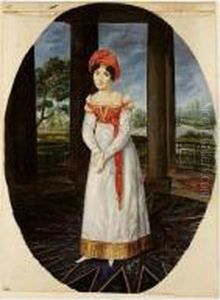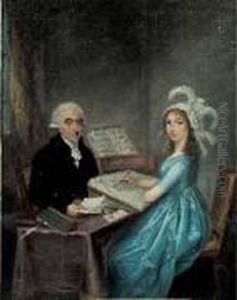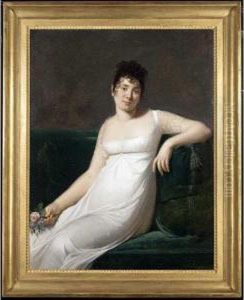Jacques Francois Momal Paintings
Jacques Francois Momal was a French architect and draftsman, born in 1754. His life and work were situated during a period of significant change in French history, encompassing the late years of the Ancien Régime, the French Revolution, and the Napoleonic era. While not as widely recognized as some of his contemporaries, Momal contributed to the architectural landscape of France during a time of both aesthetic evolution and political turmoil.
Momal received his training in the classical tradition, which was predominant in the 18th century. His education would have included studying the principles of Vitruvius, as well as the works of contemporary French architects like Jacques-Germain Soufflot, who was responsible for the Panthéon in Paris. Momal's own aesthetic leaned towards Neoclassicism, a style that sought to revive the simplicity and elegance of ancient Greek and Roman architecture. This style gained prominence towards the end of the 18th century and was associated with the ideals of the Enlightenment.
The specifics of Momal's architectural projects are not widely documented, which is not uncommon for architects from this era who may not have been attached to high-profile commissions or who may have worked primarily as draftsmen or in collaboration with other architects. However, it is likely that his work would have been influenced by the turbulent political landscape of France at the time, which saw shifts in patronage and the types of structures being commissioned.
During the Revolution, many architects found their work environments transformed as the new republican government sought to express its ideals through public works and architecture. This period saw the destruction of symbols of the Ancien Régime and the construction of new buildings that reflected the revolutionary spirit. As the political climate shifted once again with the rise of Napoleon Bonaparte, French architecture entered the Empire style period, characterized by grandeur and references to imperial Roman architecture.
Jacques Francois Momal passed away in 1830, which marked the end of the Bourbon Restoration and the July Monarchy's beginning under King Louis-Philippe I. Throughout his life, Momal would have witnessed dramatic changes not only in the political landscape but also in the evolution of architectural styles. His contributions, though perhaps not as individually prominent as those of architects like Claude Nicolas Ledoux or Jean-Nicolas-Louis Durand, were part of the collective effort that shaped the aesthetics of his time. Unfortunately, due to the lack of extensive records, much of Momal’s specific contributions and works have not been thoroughly chronicled in the annals of art history.


